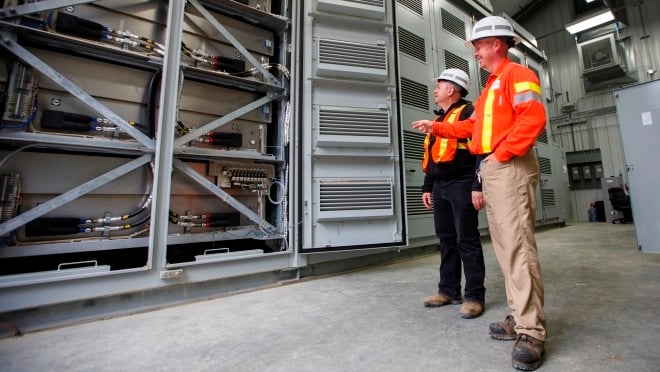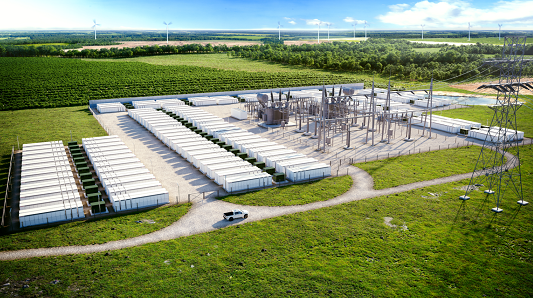
As you may have noticed from our recent coverage, Canada’s energy storage market is well-poised to build on foundations laid by early adopters and supportive regulators and politicians. Justin Rangooni, executive director of trade association Energy Storage Canada (ESC) takes us through some of the key developments to date.
The last 12 months have seen considerable development in Canada’s energy storage market. The result is a sense of powerful momentum building within the sector to accelerate the development and deployment of energy storage, particularly within the context of enabling Canada’s net-zero goals.
Enjoy 12 months of exclusive analysis
- Regular insight and analysis of the industry’s biggest developments
- In-depth interviews with the industry’s leading figures
- Annual digital subscription to the PV Tech Power journal
- Discounts on Solar Media’s portfolio of events, in-person and virtual
Examining the milestones realised, it’s not difficult to see why.
Tax credit scheme on the way
Most recently, the 2023 Federal Budget built upon the 30% Clean Technology Investment Tax Credit (ITC) announced in November’s 2022 Fall Economic Statement, with the introduction of a 30% Clean Technology Manufacturing Credit and a 15% Clean Electricity ITC, which expands eligibility to non-taxable entities. In combination with the recapitalisation of the Smart Renewables and Electrification Pathways Program (SREP), these initiatives are being recognised, in Canada and abroad, as an indication that Canada understands the vital role energy storage will play in Canada’s energy transition.
These mechanisms represent critical steps on Canada’s part to keep pace with the United States’ ITCs through the IRA, which are estimated to increase US storage deployments by as much as 24% over the next five years.
It’s not hard to imagine in the context of a 68% increase in energy storage worldwide in 2022, with additional commitments from several markets totaling 130GW by 2030.
Recent major milestones for Ontario and Alberta
Canada has seen several landmark developments at the provincial level as well, including the government of Ontario’s October 2022 announcement of one of largest competitive energy storage procurements in North America at 2.5 GW, with the first tranche of projects announced on 16 May.
This milestone was further augmented by this spring’s announcement of the 250MW Oneida Energy Storage project moving toward commercial operation in Ontario, as the project partners achieved financial close with key long-term contracting in place.
In addition to the 100MW already installed in Alberta, the province has projects with a total capacity of more than 2500MW in the queue for connection.
Elsewhere, on the east coast, NB Power is soliciting proposals for 50MW of energy storage projects in New Brunswick and Nova Scotia recently proposed amendments to the Electricity Act to enable grid-scale battery contracts and procurements.
Each of these actions at both the federal and provincial level are important steps forward for Canada to achieve its ambitious net zero goals.

Canada still needs much more storage for net zero to succeed
Energy Storage Canada’s 2022 report, Energy Storage: A Key Net Zero Pathway in Canada indicates Canada will need a minimum of 8 to 12GW of energy storage to ensure Canada achieves its 2035 goals. Moreover, while each province’s supply structure differs, potential capacity for energy storage was identified in all Canadian provinces, meeting demand needs and optimizing generation, transmission, and distribution assets.
However, that leaves a wide gap to close to realize Canada’s goals and to reach the full potential for energy storage in the country. Even the low end of the estimated potential for storage is equivalent to Manitoba’s entire installed generating capacity as of 2020.
Today’s national installed capacity of energy storage is less than 1GW.
The good news is the flexibility and diversity of energy storage technologies is set to meet the challenge:
- Energy storage systems can level out supply in urban centres and capacity constrained areas, avoiding the cost of transmission system upgrades.
- Energy storage can balance the intermittent nature of wind and solar, providing reliable, clean generation.
- Paired with nuclear generation or hydropower or other traditional forms of generation, energy storage can provide more consistent and cost-effective production.
For every resource and grid, there is a storage technology and duration to match, whether it be short duration grid-scale lithium-ion batteries, compressed air, or flywheel storage, geothermal or pumped hydro.
We are seeing in Canada and across the globe the critical recognition of the unique role energy storage can play and the diversity of services these resources can provide.
However, there is still work to be done if Canada is to capitalise on the momentum built by the 2023 Federal Budget and the milestones of the past year.
It is vital going forward that policymakers and government agencies coordinate their efforts to revamp the regulatory and legislative framework to include and accommodate energy storage. System planning and procurement approaches need to evolve to ensure pricing and investment incentives reflect the reality of storage deployment and the benefits it provides.
Long-duration storage should be a key component of Canada’s energy future
Additionally, while it is important we act and act quickly to deploy energy storage to meet the evolving needs of Canada’s energy system, we also need to act with an eye toward the long-term beyond 2035.
This means acting now to incorporate long-duration energy storage (LDES) assets, which can store large amounts of electricity for several hours or days and includes technologies such as pumped hydro electric storage, emerging battery storage, thermal storage, or compressed air.
And Canada has long history with LDES, notably Ontario Power Generation’s (OPG) pumped hydro storage project in Niagara Falls, and about 90% of the installed energy storage capacity around the world to date is pumped hydro storage.
There are several long duration technologies that are proven and operational now. ESC members are already deploying these technologies around the globe and they’re keen to develop comparable projects here in Canada now.
Which is good, because per the Canadian Climate Institute, two-thirds of the reductions necessary to meet Canada’s 2035 goals can be achieved by integrating existing technologies.
At Energy Storage Canada, we are excited to capitalise on the current momentum to ensure energy storage is among them, to 2035 and beyond.
You can also read Energy-Storage.news editor Andy Colthorpe’s Editor’s Blog from Friday (26 May), ‘What just happened in Canada’s busiest week for energy storage’ (Premium access required) here, while Alberta and Ontario’s energy storage markets are in focus in the new edition of PV Tech Power (Vol.35) due out in the coming days.
About the Author
Justin Rangooni is a lawyer with over a decade experience in the energy sector, starting with being a Senior Policy Advisor for the Ontario Minister of Energy and then as a the Ontario Policy Lead for the Canadian Wind Energy Association and most recently Vice President, Policy and Government Affairs at the Electricity Distributors Association. Energy Storage Canada (ESC) is a not-for-profit organisation dedicated solely to the growth and market development of the country’s energy storage sector as a means of accelerating the realisation of Canada’s ongoing energy transition and Net Zero goals.

